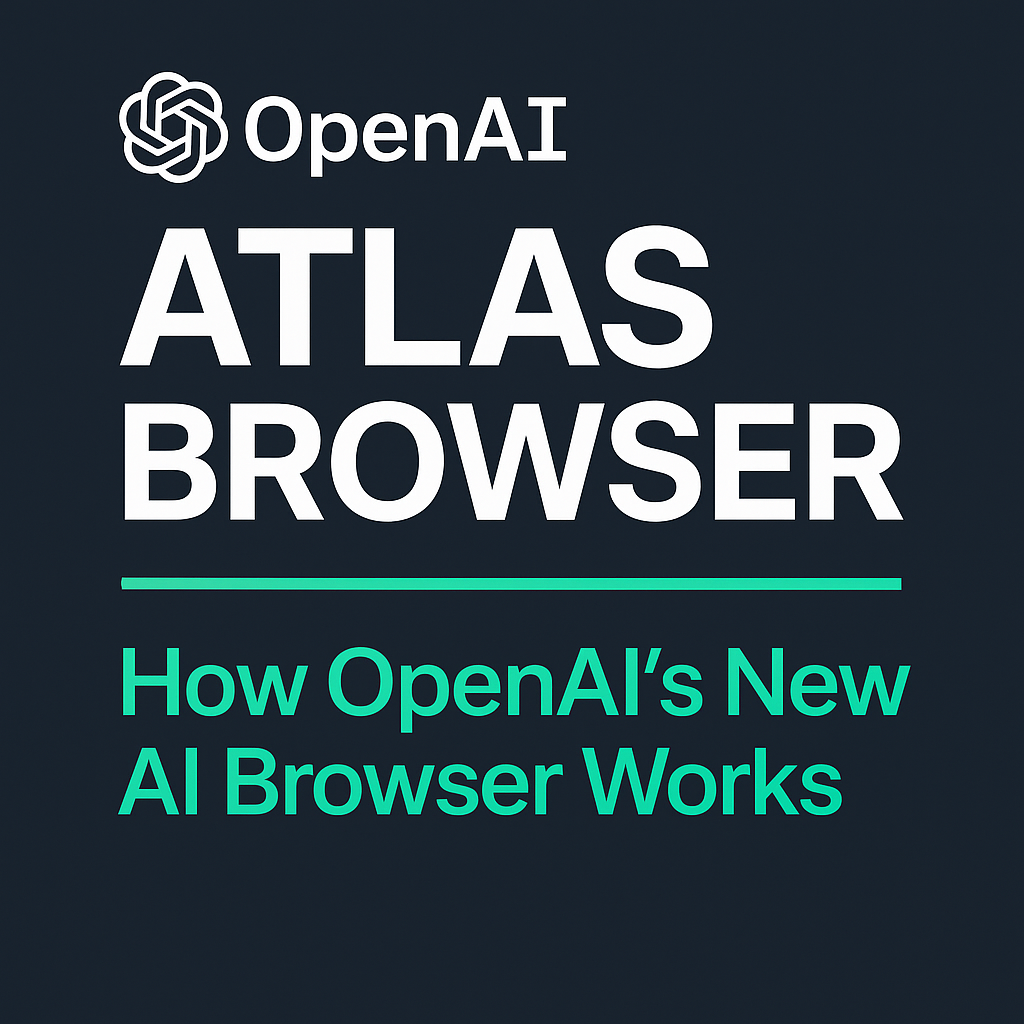Atlas is OpenAI’s freshly launched web browser, combining a standard browsing experience with tight integration of ChatGPT.
Released on October 21 2025 for macOS, with Windows, iOS and Android versions planned.
At its core: instead of opening a separate chat window or browser tab for ChatGPT, you get it built into your browser. On any website, you can bring up ChatGPT, ask it questions, let it summarise content, or even let it “do stuff” for you.
How it works — the nuts and bolts
Here’s a deeper breakdown of what Atlas offers and how it actually works (and yes — some caveats).
Atlas uses the Chromium engine (the same core that powers Google Chrome) so web compatibility is broadly good.
While browsing, you’ll see a chat sidebar (or sidecar) that lets you interact with the page you’re on. For example:
* Ask “What’s this article saying?” → ChatGPT summarises.
* “Compare these two product pages” → it can parse both and highlight differences.
* “Rewrite this email text” → with cursor chat (highlight something and ask ChatGPT to edit).
This is a major leap: In “agent mode” (currently preview for paid tiers) ChatGPT can operate inside the browser: open pages, fill forms, click buttons — under your permission.
Example: One demo showed ChatGPT pulling up a recipe, finding ingredients online, placing them in a cart on a grocery site.
Atlas stores optional “memories” — browsing context, preferences, tasks you’ve done — so that ChatGPT is more helpful over time. Want to pick up where you left off? Atlas tries to help.
Because all this “intelligent” browsing implies deeper data collection, Atlas comes with user-controls: you decide what ChatGPT can “see”, you can clear browser memories, toggle private/incognito mode, disable certain features. But yes — the deeper the features, the higher the risk.
You can bring bookmarks, history, passwords from Chrome (or another browser) into Atlas to hit the ground running.
Why it matters — especially for someone like you
Since you’re an online marketer, you’re always looking for productivity gains, smarter workflows, and ways to stay ahead. Here’s why Atlas deserves serious consideration — but not without caution.
Productivity & workflow enhancement
Instead of flipping between browser tabs and a separate ChatGPT tab/window, you’ve got assistance built in. That saves time and reduces friction.
Summarising competitor pages, rewriting drafts, pulling insights from web pages — all faster.
Agent mode could automate parts of your workflow (e.g., gathering data, opening and populating forms, shopping or ad purchase flows) — freeing your brain for higher-level work.
Because Atlas remembers your habits/preferences, the more you use it, the smarter it can become; that’s a potential edge in marketing workflows.
Strategic shift & ecosystem implications
The risks you must evaluate
Atlas can collect more context than many browsers. Is your browsing data safe? What about agency or client data you handle? If ChatGPT “remembers” tasks or pages that involve sensitive campaign data, you’ll want to be sure that data isn't exposed or used in unintended ways.
Agent mode can click buttons, fill forms, etc. But AI can make mistakes. If you let it loose on something missioncritical (ad spend, campaign launches) you must monitor closely.
If you switch to Atlas and build workflows around it, will you be tied in? Will cross-platform versions (Windows, mobile) deliver on time? If delays occur, you might be constrained.
It’s early days. Some features may be half-baked, buggy, or reliant on cloud backend. Don’t assume it’s flawless.
My take: Should you try it?
Yes — but conditionally. Here’s how I’d break it down.
Go ahead if:
Be cautious if:
How you should experiment
Final word
ChatGPT Atlas represents a major shift in how we might browse the web: not just go to website → read → do tasks, but browse with an AI assistant observing, summarising, acting alongside you.
For an online marketer who thrives on agility, insight and workflow efficiency, that’s serious potential.
But — and this is real talk — it isn’t flawless yet. There are privacy risks, workflow risks, platform-risks. It’s not a silver bullet. It’s experiment-worthy. Be early, be smart, but don’t go all-in until you’ve vetted it.



